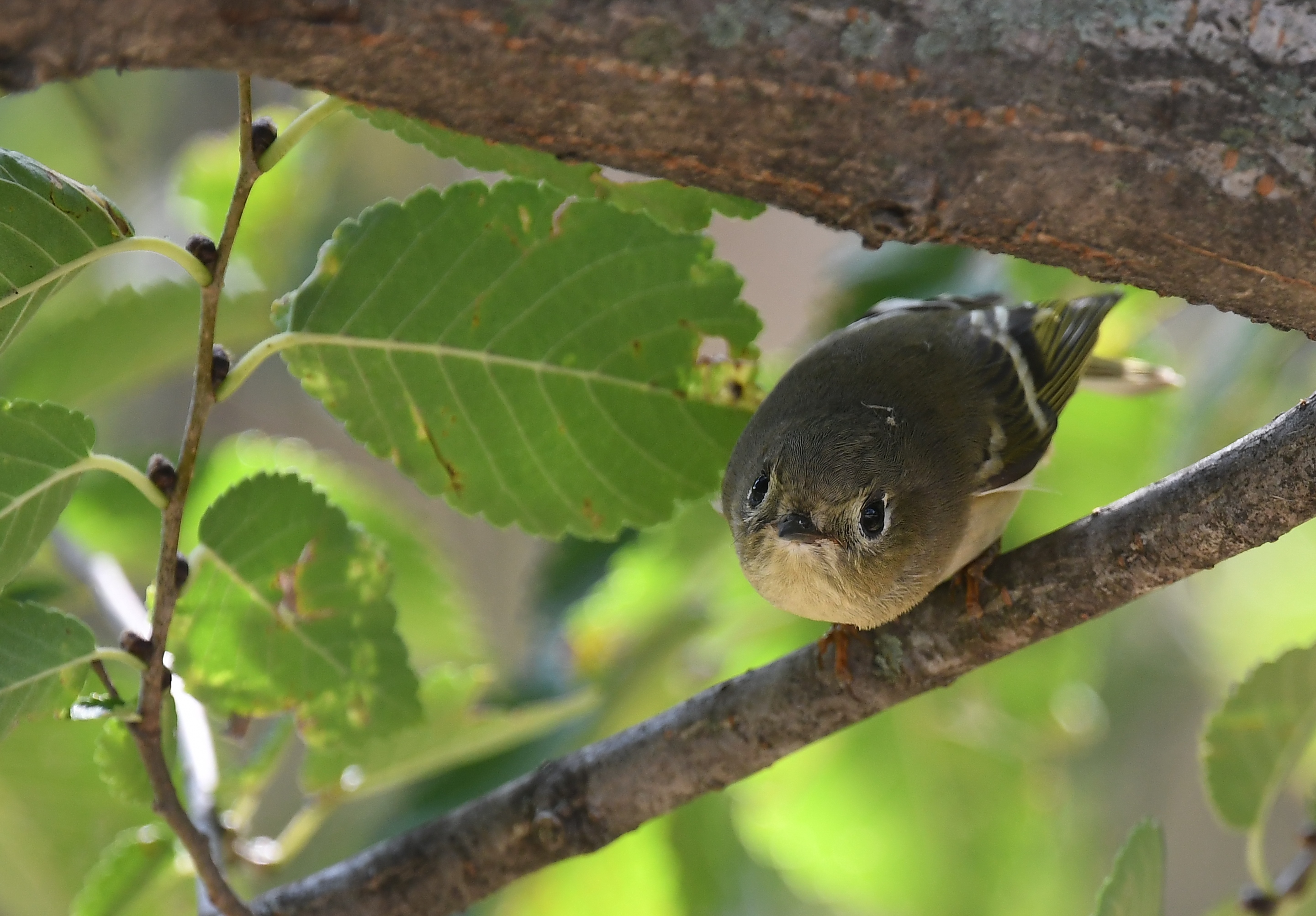For several days in late April, I’ve heard kinglets in the trees. A golden-crowned kinglet (Regulus satrapa) one day, and a ruby-crowned kinglet (Regulus calendula) a few days later. The ruby-crowned song is loud, rapid and full of excitement. Their golden-crowned cousins sing more sedately and at a higher pitch.
First of all, they are called kings because of their crowns. They are actually called king-lets because they are so small. With a wing span of about six inches, they’re only three-four inches long and weigh about a fifth of an ounce. The male of the ruby-crowned variety has a seldom-seen red crown that he deploys by raising his crown feathers only when he’s courting or fending off interlopers. He has a white ring around his eye and a white bar on his wing but is otherwise greenish-gray with more olive drab underparts. He blends in well with his surroundings. He has a relatively large head and short neck, and his beak is straight and short and thin, designed for collecting insects. He likes to flit about frenetically, flicking his wings, on the hunt for insects in the trees. He won’t stay here very long as he’s probably on the migration route to his summer breeding ground in the northern conifer forests. There he will find a mate. She will build a tiny secret nest high in a conifer hidden by an overhanging branch. She’ll make her nest soft and warm, using moss, lichens, bark strips, spiderwebs, twigs, rootlets, and conifer needles. She’ll line it with feathers, plant down, and animal hair. They’ll mate and she’ll lay up to 10 little eggs, a large number for any bird. Together they’ll raise one brood this coming summer, and then come fall they’ll head south where they’ll roost in more open settings like the woods on Owl Acres.
Their cousins the golden-crowned kinglets are not as secretive about their crowns. They boast their yellow headpieces and black and white-striped faces as they transit through Owl Acres. They, too are on their way north. They’re a bit smaller than their ruby-crowned cousins. They’ve probably been wintering farther south, so we’ll just wave as they fly by.
Photo by Wildreturn

1 comment